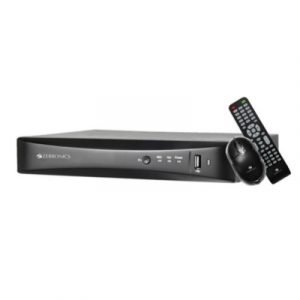Nowadays we see the usage of IP camera becoming more and more popular. These cameras record the video through an NVR(Network Video Recorder) or VMS(Video Management Software). We purchase a system, have it installed according to our requirements and start the monitoring and recording system. After that, we often leave it as it is without updating the system.

In fact, few installers or dealers make it clear the necessity of keeping the system up-to-date or the ongoing support for the NVR/VMS. And most of the consumers leave the system as it is, simply because the surveillance is going on and they don’t find it necessary to update the system. This introduces several problems.
It takes time and resource to update a surveillance system’s NVR or VMS. But with regular updates, you can save money and protect your CCTV system from potential threats. Updates can also bring in new features. But you must make sure that the device firmware and software is ready to be updated. Often it may not be the case and you might have to go through intermediate steps before you can accomplish the task. This happens when the device firmware or software are several versions behind.
We will discuss some of the reasons why you should keep the system proper with updates and ongoing support.
To protect against cyber threats:
Vulnerabilities are discovered with time as there are several hackers and cybercriminals who indulge in finding these vulnerabilities. This opens the system to risks of manipulation, stealing of recorded data and other forms of damage to the system. To mitigate these vulnerabilities, companies release patches. To implement these fixes it is important to keep the system up-to-date.
To apply bug fixes:
A system can have several bugs and coding errors. After all, it is made by humans and humans make errors. One manufacturer had a bug in their NVR which allowed to delete all the recorded video when a certain criterion was met. As expected the manufacturer fixed the bug soon enough. But systems which have not applied the bug fix still reports of the issue.
To improve performance:
The NVR or VMS is installed over an OS typically Linux for NVR and Windows for VMS. These OS are continuously evolving with updates, bug fixes, and performance improvement patches. The NVR and VMS are also updated to keep working with the OS. These updates bring several performance improvements and should be applied regularly to get the maximum out of the system. Recording video is a tough work. Even slight performance improvements in terms of better compression, fewer dropped frames, lesser storage requirement, less CPU or RAM usage makes a huge difference to the overall system. So if you are gaining so much from the updates, why not apply them?
To be able to add newer cameras:
Manufacturers are continuously improving on the surveillance technology and releasing newer cameras with advanced features. These cameras are often incompatible with the older NVRs or VMS. To make them compatible, manufacturers release device drivers, device packs, system patches, firmware updates, etc. These must be installed so that you can use the new camera you have bought with your old system.
To update cameras for bug fixes and new features:
Cameras themselves often come with updates like bug fixes, resolving known issues, resolve security loopholes and even additional features that can change the way you monitor using the system. So to implement these changes it is important to keep the cameras up-to-date like the NVR/VMS.
